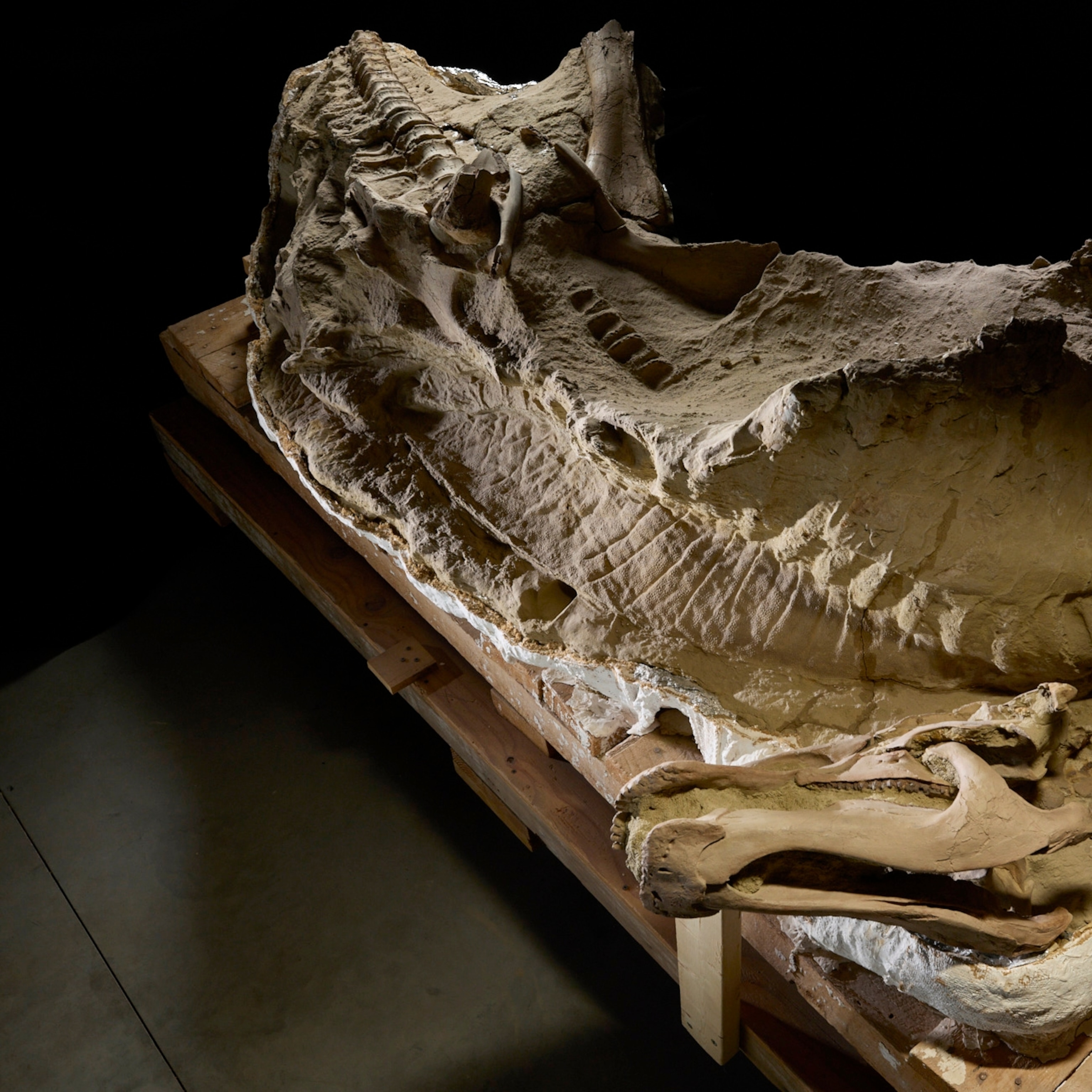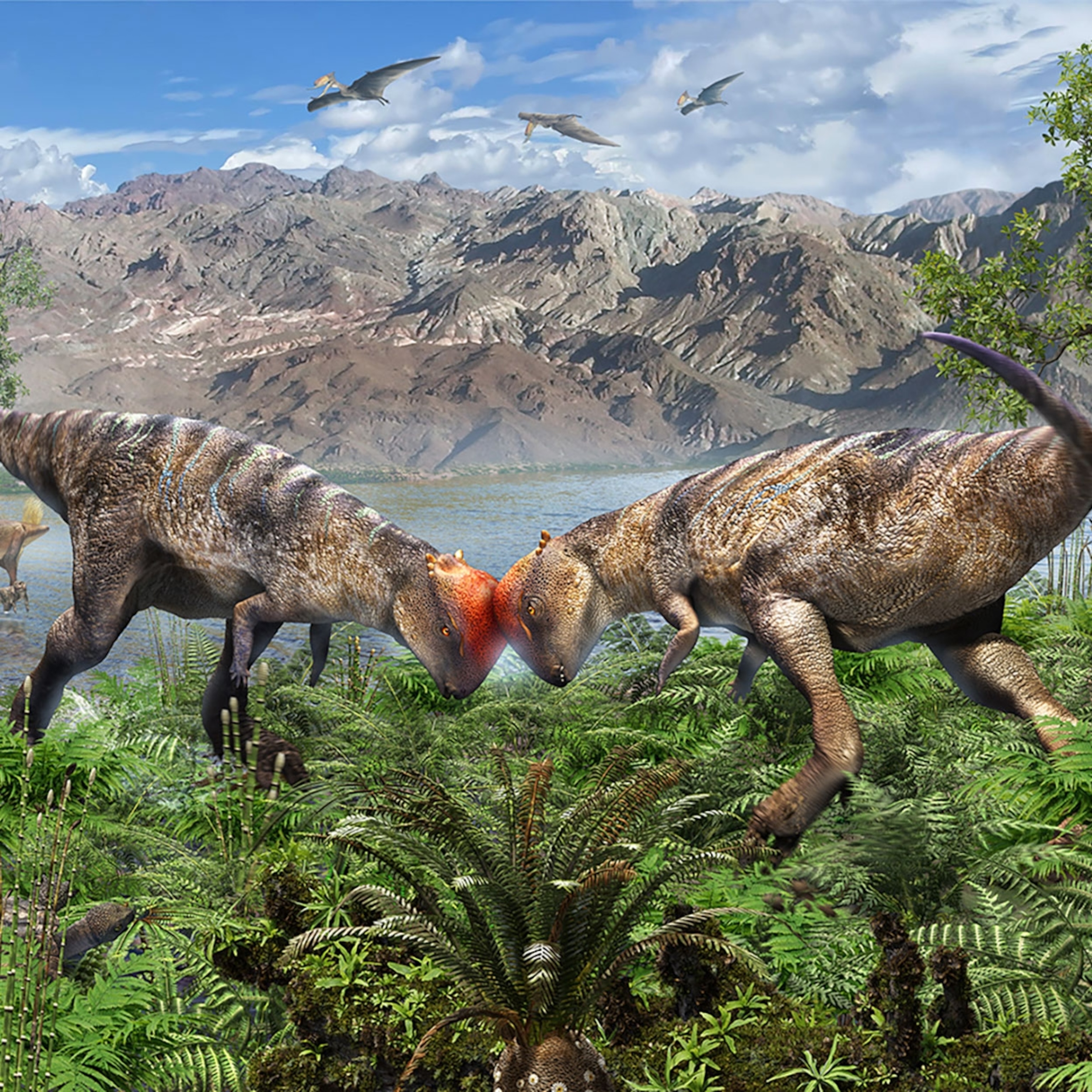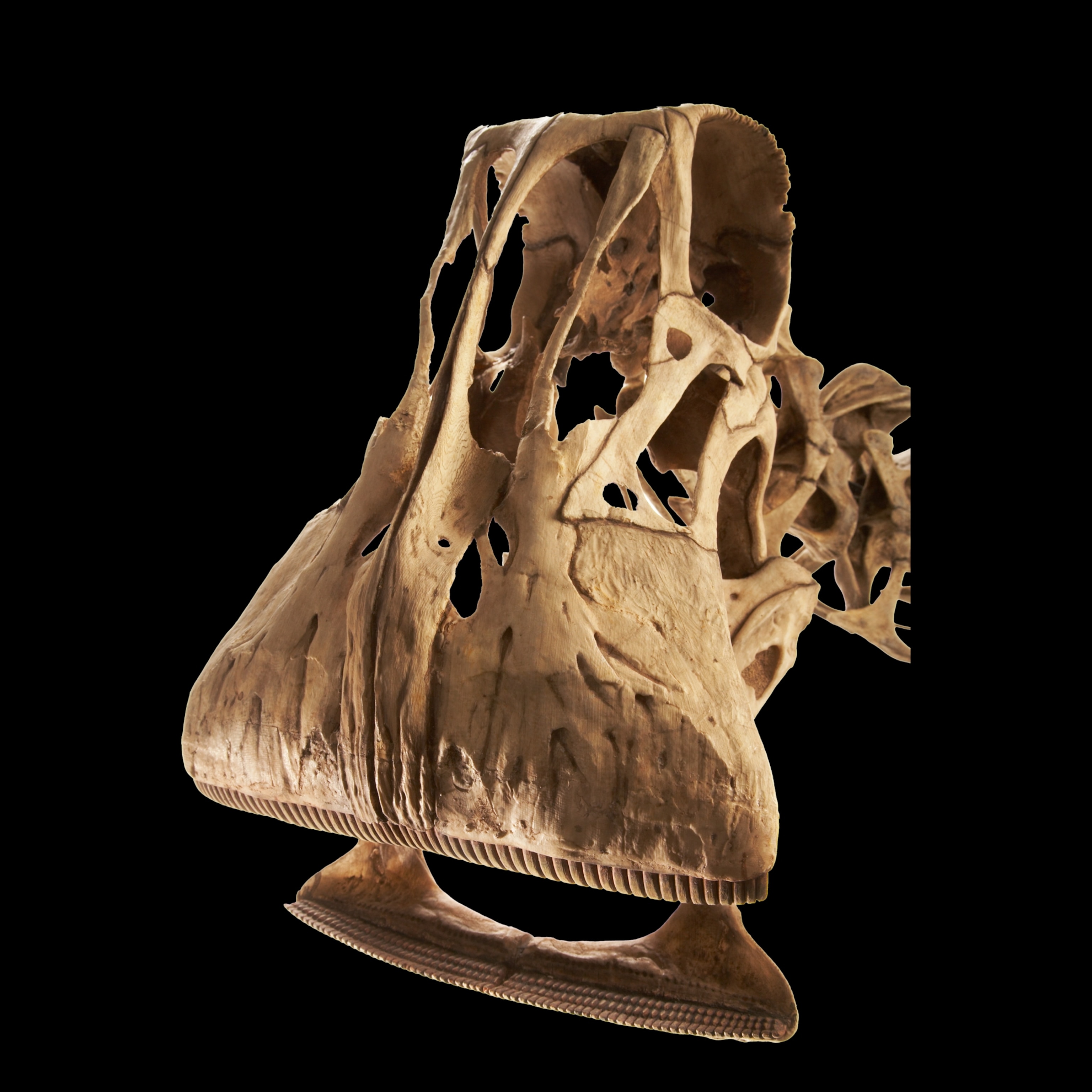
Giant 'sea monster' fossil is one of the largest of its kind
The roughly 30-foot-long fossil found in England offers new clues to how ichthyosaurs evolved into marine titans.
In the winter chill of January 2021, Joe Davis found something astonishing at the Rutland Water Nature Reserve in England. He had gone out to drain a lagoon on the property, part of his work as conservation team leader at the reserve, when he noticed some large, fossilized bones sticking out of the ground.
At first it seemed that these were parts of a huge dinosaur. But when University of Manchester paleontologist Dean Lomax received an email with snapshots of the find, he immediately knew that Davis had found an enormous sea reptile called an ichthyosaur. From the outset, Lomax says, it was apparent that the Rutland find might be something very special.
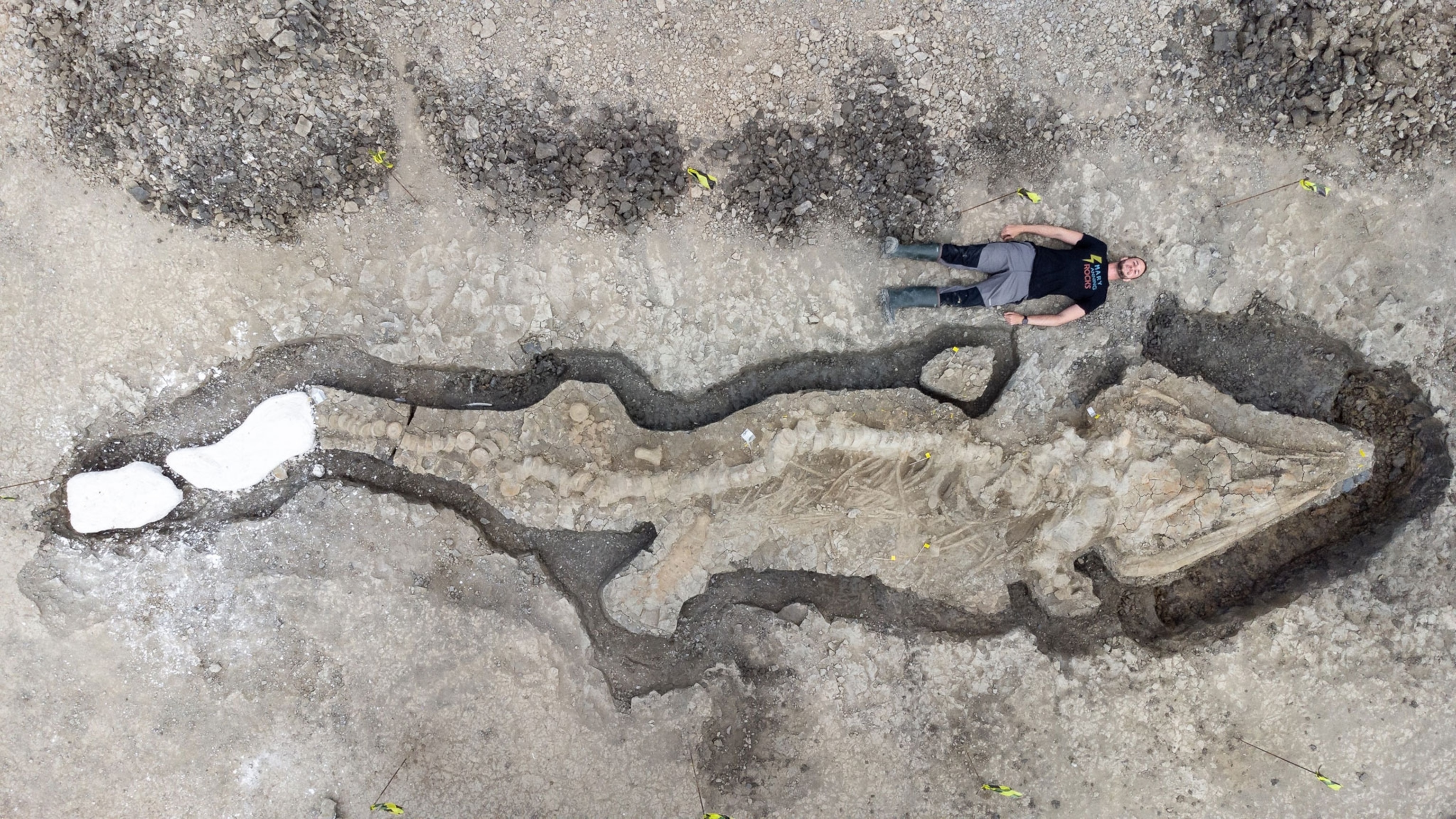
Ichthyosaurs coexisted with dinosaurs, but these seagoing reptiles were entirely different creatures. They evolved from land reptiles during the Triassic period, over 246 million years ago. Ichthyosaurs became more streamlined and fish-like over time, and diverse species plied the seas until about 95 million years ago.
Many ichthyosaurs were comparable in size to today’s sharks, dining on fish, squid, and other small prey. Some were apex predators capable of chowing down on other large marine reptiles. Until now, the biggest ichthyosaurs on record have been from the Triassic, between 250 and 201 million years ago.
But the Rutland fossil is geologically younger, dated to about 180 million years ago, and there’s no doubt this animal was a giant. “To find a specimen of this size and completeness is remarkable,” says University of Liège paleontologist Rebecca Bennion, who was not involved in the excavation. The skull alone is nearly seven feet long, and the entire body stretches more than 30 feet—comparable in size to a modern minke whale. The nearly complete skeleton took a little more than two weeks to fully excavate, even with crews working from sunrise to sunset.
In the end, Lomax says, he and his colleagues have “unearthed the most complete skeleton of a large prehistoric reptile ever discovered in Britain.”
Though the find has yet to be formally described, Jorge Velez-Juarbe, a paleontologist at the Natural History Museum of Los Angeles County who was not involved in the excavation, calls it an “amazing discovery” that offers a new window into the evolutionary history of these aquatic reptiles. “As in whales,” he says, “ichthyosaurs reached gigantic sizes more than once in different lineages throughout their history.”
The evolution of a sea monster
The Rutland ichthyosaur is still in the process of being freed from the rock in which it was encased. Nevertheless, Lomax says, “we took every single measurement possible and thousands of photographs,” which formed the basis for a 3D model of the bones.
At present, the Rutland skeleton is hypothesized to represent an ichthyosaur called Temnodontosaurus trigonodon, a species principally known from isolated bones found in the Jurassic rocks of Germany. In the early part of the Jurassic, about 180 million years ago, these reptiles were the largest marine predators on the planet, Lomax says.
While the animals are most popularly portrayed as dolphin-like squid snatchers, the role of ichthyosaurs as enormous seagoing carnivores is just beginning to come into focus. Other ichthyosaur fossils indicate that the largest species could feed on their fellow marine reptiles, such as the long-necked plesiosaurs and perhaps other ichthyosaurs.
Another ichthyosaur might have even tried to make a meal of the Rutland skeleton. The excavators found several isolated Temnodontosaurus teeth around the skeleton, often a sign of scavenging.
“One large tooth was found next to where part of the tail appears to have been pulled,” Lomax says, hinting that another ichthyosaur came along before burial to scavenge on the carcass.
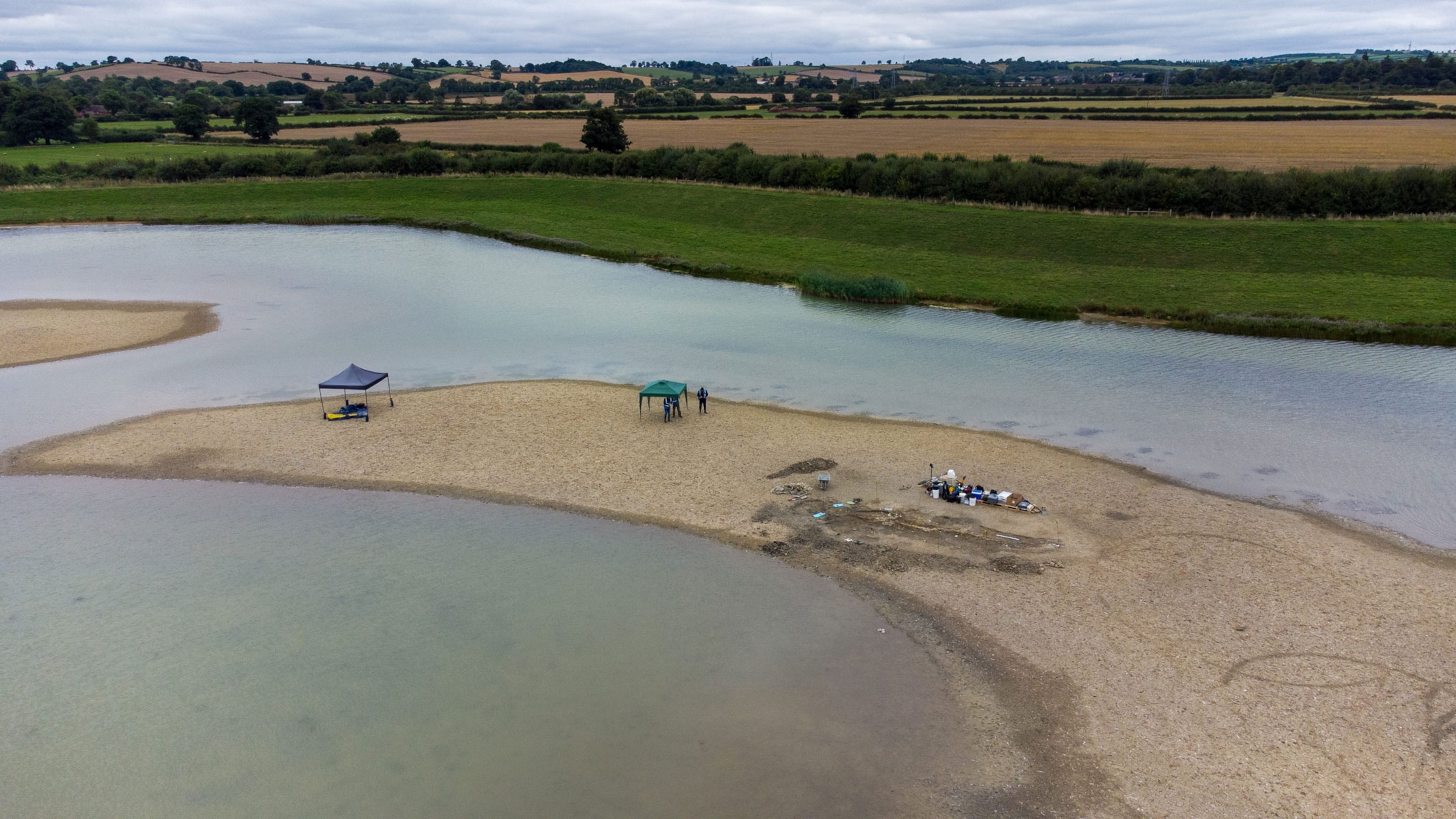
A repeat giant
In a recent Science study, Velez-Juarbe described another, much older giant ichthyosaur from Nevada called Cymbospondylus youngorum. That animal had evolved about three million years after the first ichthyosaurs, which were only about six feet long. Cymbospondylus youngorum, by contrast, is among the largest ichthyosaurs ever found, with a skull that is more than six feet long.
While three million years may seem like a long time, it’s absolutely speedy compared to the evolutionary growth of whales, which took about 50 million years to go from their smaller land-dwelling ancestors to ocean giants.
What might have allowed ichthyosaurs to repeatedly and rapidly evolve enormous sizes is still an open question. In the early Triassic, Velez-Juarbe says, the ancient food webs seemed to have been rich and relatively stable—a full menu of marine invertebrates to support a flotilla of predatory reptiles. Coil-shelled cephalopods called ammonoids were so abundant that they formed a stable part of the ichthyosaur diet all by themselves.
“There was a lot of food in the Lower and Middle Triassic, and that was likely a reason why they were able to reach such large body sizes at surprisingly fast evolutionary rates,” Velez-Juarbe says.
Several species of whale-size ichthyosaurs evolved during this time, but they disappeared when a mass extinction struck 201 million years ago, marking the end of the Triassic period. The surviving ichthyosaurs were smaller, but some soon ballooned in size again.
“In the Early Jurassic, the first marine vertebrates to reach gigantic size were once again the ichthyosaurs,” Lomax says, with the Rutland specimen being the largest and most complete skeleton of this second wave. While the Triassic ichthyosaurs are still the largest of these animals known, “Temnodontosaurus was no minnow,” Bennion says.
By looking at the teeth of the new specimen, Velez-Juarbe says, paleontologists may get a better idea of what the Rutland ichthyosaur was eating and what role it played in its later Jurassic ecosystem.
The sudden influx of these giant ichthyosaur discoveries almost certainly indicates that there are more to be found, even in a well-searched place like England. Some of these fish-like lizards were the first giant-size animals on the planet, and learning more about them can help scientists better understand the role of ocean leviathans throughout history.

